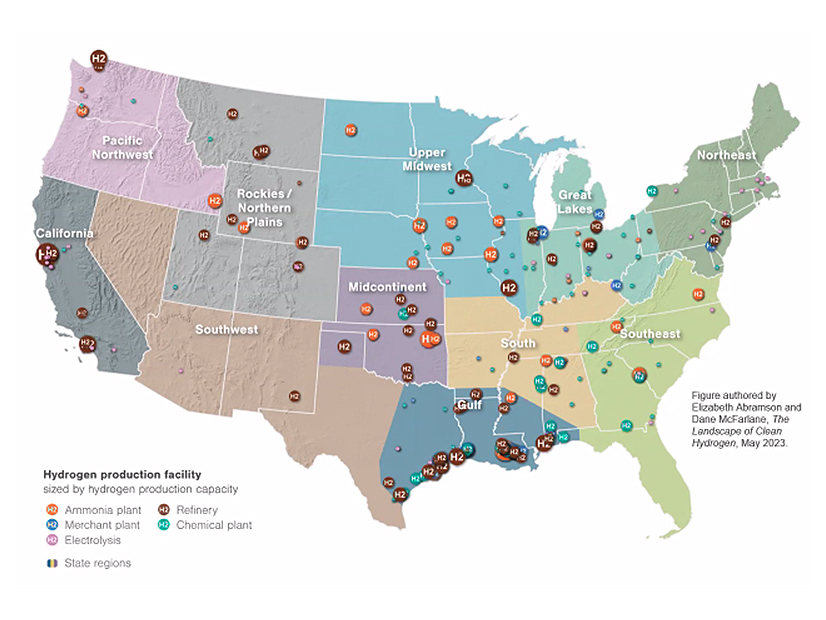The six regional industrial hydrogen hubs the U.S. Department of Energy will choose among dozens of applicants this year will not be enough to reach its stated production targets, according to a new report released Wednesday.
“The Landscape of Clean Hydrogen,” issued by Carbon Solutions and the Industrial Innovation Initiative, argues that to significantly impact industrial carbon emissions — which account for 30% of the U.S.’ total greenhouse gas emissions — industry as well as state and federal governments must develop many more hubs that are much larger.
The study points to refineries, ammonia production for fertilizer manufacturing and steelmaking as the primary candidates for using clean hydrogen as the most efficient route to reducing industrial carbon emissions.
“Hydrogen production must quickly scale beyond these initial hubs to reach the DOE’s targets of 10 million metric tons of clean hydrogen by 2030, 20 million metric tons by 2040 and 50 million metric tons by 2050,” the report argues.
 Dane McFarlane, Carbon Solutions | Carbon Solutions / Industrial Innovation Initiative
Dane McFarlane, Carbon Solutions | Carbon Solutions / Industrial Innovation InitiativeBut even 50 million tons may be inadequate to get industrial carbon emissions under control, Dane McFarlane, director of climate and policy at Carbon Solutions, said in a webinar. “Other studies have shown an even larger potential demand or need for clean hydrogen under net-zero climate scenarios,” he said.
U.S. industry, primarily oil refining, now produces about 10 million metric tons a year, according to DOE.
“DOE’s goals represent hydrogen production at five times today’s current capacity,” the report notes, adding that however industry chooses to produce hydrogen, it must meet the “lifecycle carbon intensity thresholds” as defined by the Inflation Reduction Act. And massive amounts must be produced in the hubs.
“It will be beneficial to establish hydrogen hubs with large production targets,” the report argues, “such as 100,000 to 1 million tons of hydrogen per year. Otherwise, it will take many more hubs at DOE’s minimum production thresholds to meet road map goals and midcentury targets.”
Nearly all the hydrogen produced by industry today is made by steam reforming of methane, an energy-intensive process that typically releases the resulting CO2 into the atmosphere. When announcing $7 billion in matching grants for local hydrogen hubs, DOE called for hubs using steam reformation to capture that CO2 for another industrial purpose or for injection deep underground.
The report argues that electrolysis, used to produce less than 1% of the hydrogen used by industry, must be scaled quickly “to achieve multi-gigawatt scale in the next decade.”
McFarlane emphasized that point during the webinar.
“We have an annual electrolysis production capacity of only about 3,000 tons per year, according to the DOE,” he said. “This is the equivalent of about 18 MW of electrical capacity. And there are currently announced electrolysis projects that are about 120 MW each.”
The report assumes that renewable power generation growth will soar in the coming decades, whether or not it will be needed for electrolytic hydrogen production.
“I think aside from the very real challenge of permitting all this new infrastructure, which I think we all recognize is one of the biggest bottlenecks here, the tailwinds for renewable power are looking very, very strong,” said Zachary Byrum, an associate with the World Resources Institute.
“The markets have realized that renewable power is inexpensive,” he said. “It’s reliable in terms of extreme weather events, such as snowstorms … as we saw several years ago. The writing is on the wall. I don’t want to come out and say the future is guaranteed, but it does look promising.
“And I think once we handle some of these regulatory and … policy problems, we are in a favorable position.”


